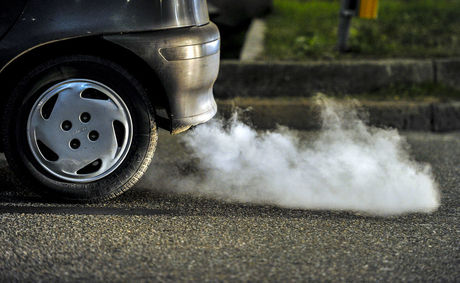Scientists unravel how natural gas is converted into methanol at room temperature

Methanol is among the 20 most commonly used substances in the chemical industry. It is used to produce antifreeze, fuels and solvents, but also in various kinds of plastic that we use every day. The substance is made from natural gas (methane). The large-scale conversion of methane into methanol currently involves various steps under high pressure and at a high temperature, making it a process that requires a lot of energy.
In the nineties, scientists developed a more direct method to produce methanol — a process that even produces extra energy. However, they didn’t really understand the process. It was a kind of ‘black box’ into which they inserted methane, with a big chance that methanol would come out at the other end.
Twenty years later, postdoctoral researcher Pieter Vanelderen from the Centre for Surface Chemistry and Catalysis at KU Leuven (University of Leuven), Belgium, has unravelled the mechanism behind the process in collaboration with chemists from Stanford University.
The chemical reaction involves adding a specific substance known as a catalyst. Many catalysts consist of zeolites — minerals with a porous framework — containing a specific atom. For the direct conversion of methane into methanol, this catalyst is a zeolite with added iron. KU Leuven Professor Bert Sels said: “We found that the iron needs to bind to the zeolite in a flat, bound orientation.” (See image below).
“We have provided the first exact definition of what the iron atom looks like that is needed to convert methane into methanol at room temperature. Furthermore, we can describe why this conversion method is so successful,” explained Vanelderen. “This discovery may revolutionise the production of methanol and, by extension, all its derivatives that we use in our everyday lives.”

“This breakthrough has happened because we were the first chemists to join forces with biochemists to work on this topic,” he said. “Our colleagues at Stanford are specialised in the use of enzymes as catalysts in chemical reactions. Using methods initially developed to study iron-containing enzymes, they managed to take a ‘picture’, as it were, of what it is that happens to this iron-containing zeolite during the conversion of methane into methanol. This information allowed us to determine which specific iron atom was doing the work and to find its exact location in the zeolite.”
Now that scientists know exactly what the catalyst looks like, they can start imitating and optimising it in the lab. This opens up quite a few possibilities for the future. For one thing, the production of the methanol needed to produce plastic will become a lot cheaper. The catalyst is also useful for the conversion of nitrogen oxides. It could be used, for instance, to clean the exhaust fumes of cars.
The study was coordinated by Professor Bert Sels and Professor Robert Schoonheydt from the KU Leuven Centre for Surface Chemistry and Catalysis, in collaboration with Professor Kristine Pierloot (KU Leuven) and Professor Edward Solomon at Stanford University. Benjamin Snyder, a graduate student at Stanford University, is co-lead author.
The study was funded by Research Foundation Flanders (FWO) and the National Science Foundation of the USA, and was published in Nature.
OCP and Fortescue to develop green hydrogen and ammonia in Morocco
OCP Group, a manufacturer of plant nutrition and phosphate-based fertilisers, and Fortescue...
Siemens announces Beyond 1% Summit in Sydney
The Siemens Beyond 1% Summit in Sydney in July will focus on accelerating digitalisation for...
UQ turns carbon dioxide into sustainable power
Researchers at the University of Queensland have built a generator that absorbs carbon dioxide to...














